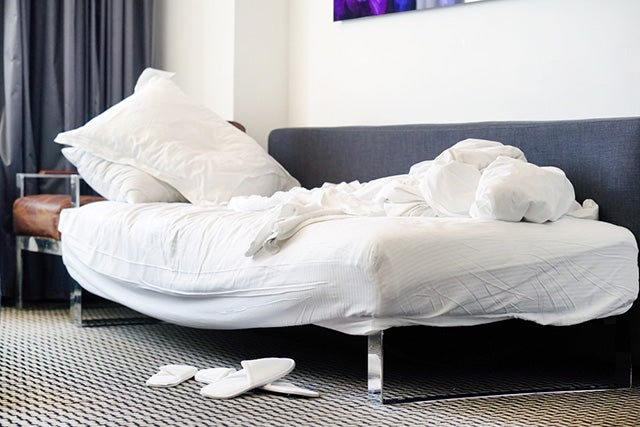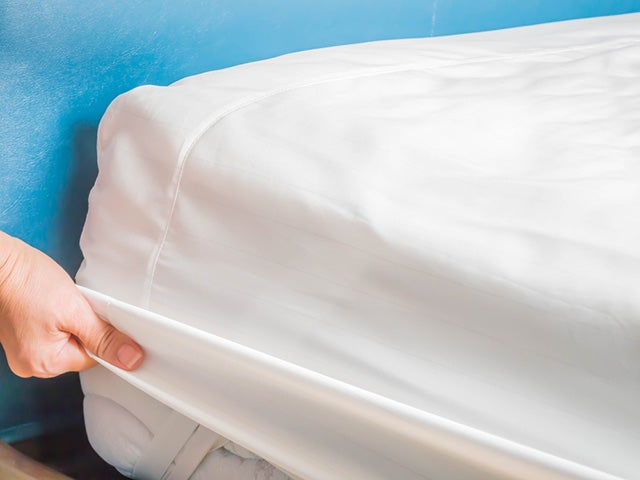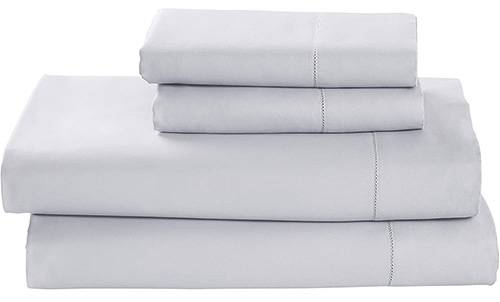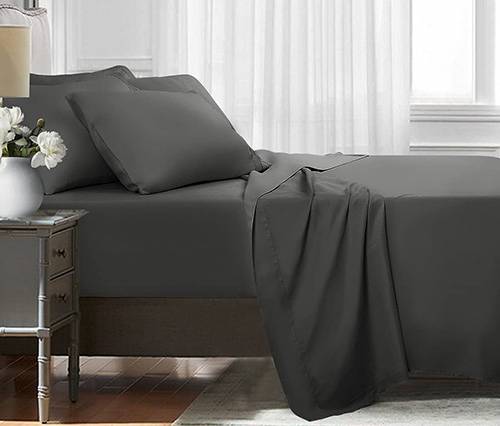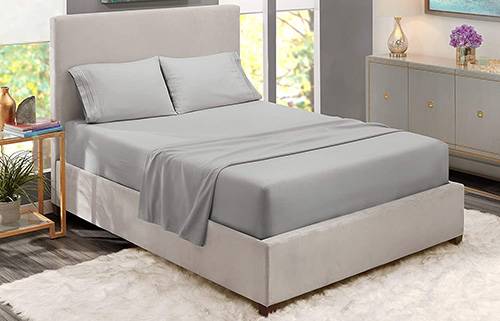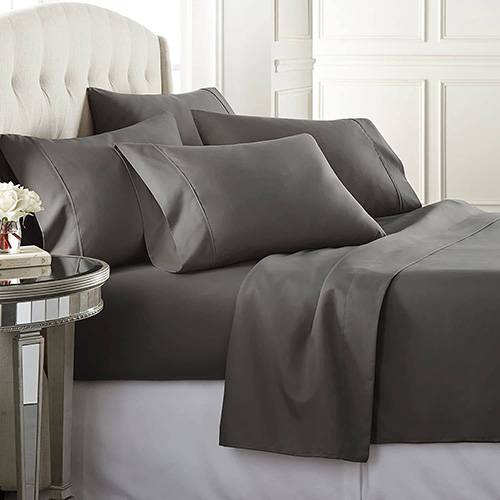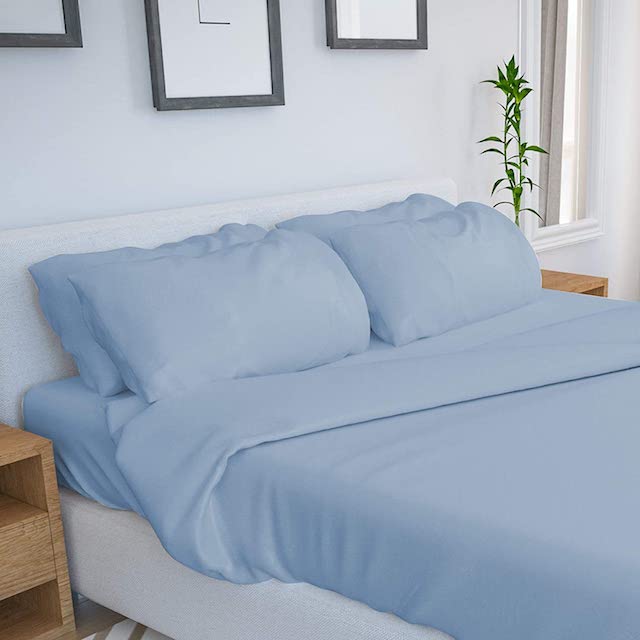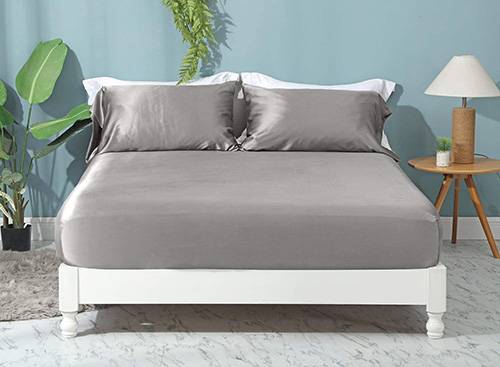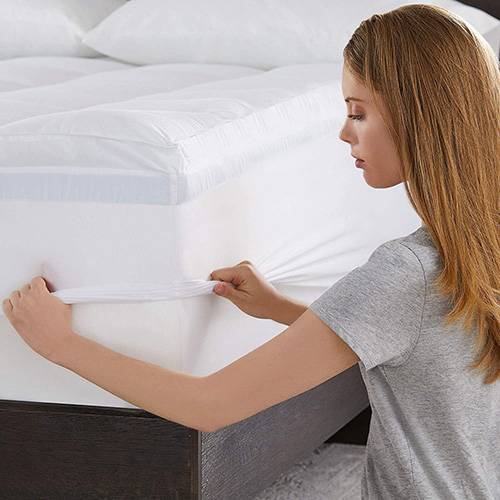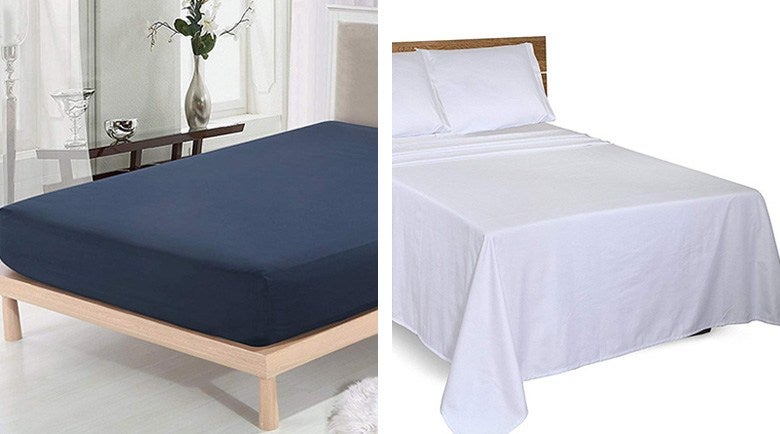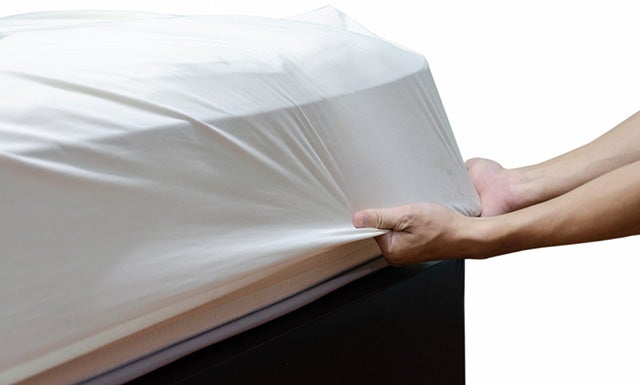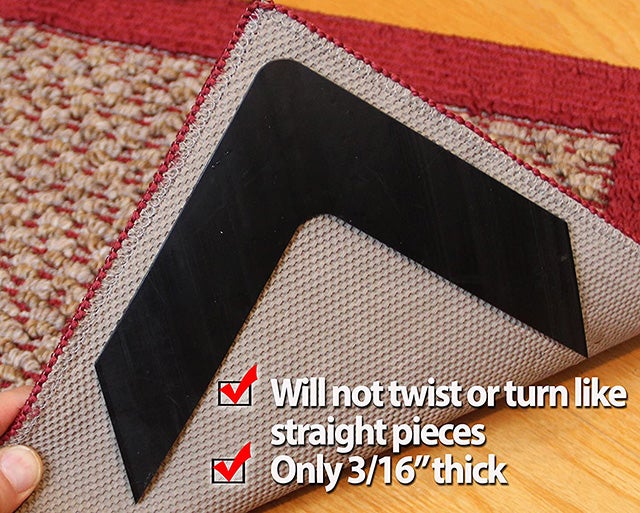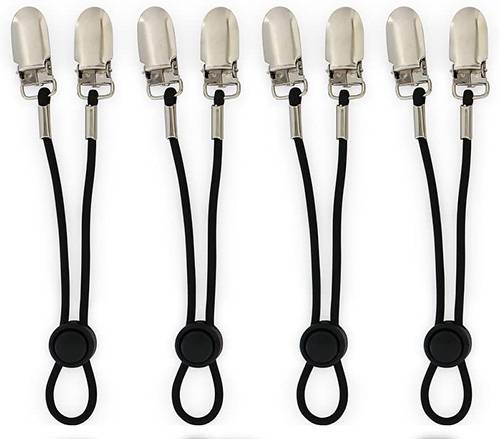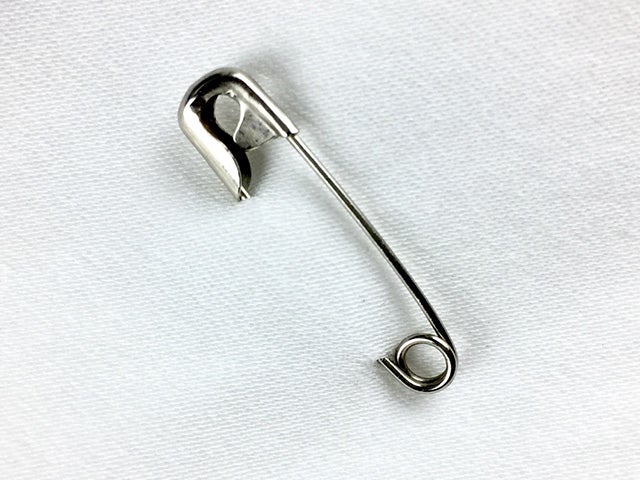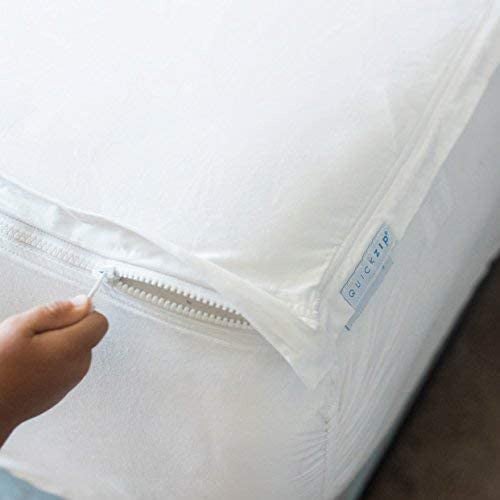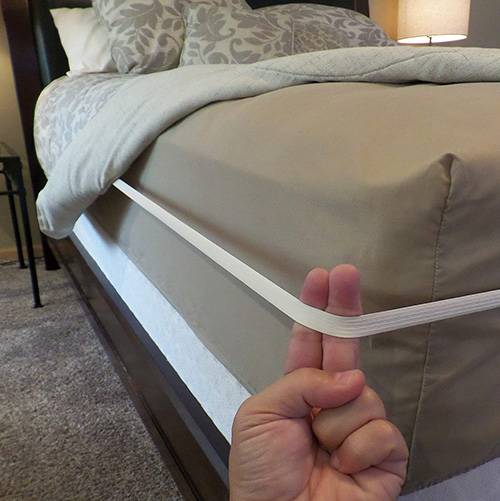Though this may seem like a petty problem, it can be a real problem indeed. Sheets that don’t sit still during the night end up ruining your sleep as they shuffle around. You’ll have to remake your messy bed every morning and you’ll never feel as snug as you’re supposed to at night.
It turns out, a lot of people suffer from this issue, they just choose to suffer in silence because they don’t know what to do.
Well, suffer in silence no more. Today, we’re going to break down some methods and tricks you can use to keep your bed sheets in place while you sleep restfully.
Pick the Perfect Bed Sheets
First and foremost, there is your selection of bed sheets. You probably want the best, most comfortable and reasonable sheets for your bed that fit just right and are made to last. In order to do that, there’s a little checklist you’ll have to cross-reference with to meet your criteria.
— Material
First up is the material you select. Something soft, something warm, something breathable. There are a multitude of materials to choose from, all with their own benefits, shortcomings, and alternatives.
Cotton
Being one of the most common material types out there, you’ve probably got cotton sheets sitting at home already. Cotton sheets are light, breathable, and cool. They’re great options for the summer season and really soften up the more you clean them.
There are different types of cotton to consider, all with similar and differentiating features:
- Egyptian Cotton: This high-quality cotton is durable, pill-resistant, and smooth. Its cotton fibers are the longest you get and can have quite the price tag.
- Pima Cotton: The runner-up behind Egyptian cotton is Pima cotton. It’s everything Egyptian cotton promises with a significantly lower price tag. Unfortunately, if you’ve slept with Egyptian cotton, Pima cotton will never feel the same no matter how tempting its prices are.
- Upland Cotton: This is a shorter stapled cotton than both Egyptian and Pima. Most of the time, when you’re buying 100% cotton, that’s Upland.
- Flannel Cotton: This cold-weather material is basically cotton fibers shredded up and individually shaved for that fuzzier and thick feeling you’re used to.
- Jersey Cotton: Finally, we have jersey cotton. It’s a stretchier fiber that doesn’t last as long as other cottons and can begin to pill easily. It is, however, extremely soft.
Polyester
Polyester is usually used within blends of material for a softer texture. These are more affordable sheets, easier to maintain, and durable.
It’s also wrinkle as well as water resistant, so it’s perfect for beds that commonly encounter children and pets. There is one downside, however, and that’s that polyester absorbs oil and grease from your skin.
Microfiber
This fiber is polyester woven extremely fine. Microfiber is easy to clean and ideal for children. It’s ideal for the colder weather as it’s not breathable but pleasantly soft.
Linen
This hypoallergenic material is the perfect solution for people trying to beat the heat. it’s naturally cooling and doesn’t irritate you at night. Linen does tend to be a little stiff at first and can’t compare to the soft texture of cotton.
Bamboo
If you’re keen on being environmentally friendly in your choices, then bamboo is the perfect solution for you. Bamboo cellulose is what’s used and woven into bamboo rayon, the fibers used to make bamboo sheets. These sheets are extremely soft, hypoallergenic, and breathable. They also tend to be wrinkle-resistant and considerably durable.
Silk
This natural fiber derived from silkworms is perhaps one of the most delicate fabrics you’ll come across. Silk sheets are soft, smooth, silky, cool, hypoallergenic, and vibrantly elegant. They’re a luxurious bed sheet, but the maintenance and price are quite high.
Mattress Depth vs Mattress Size
Many people make the mistake of believing that just because a sheet says ‘Queen-sized’, it’s going to fit all queen mattresses. There are two dimensions to consider when buying a bed sheet, the size of your mattress, as well as the depth of your mattress.
Not every mattress has the same depth. Some can be as thin as 8 inches while others are 12 inches and above. This measurement isn’t always taken into consideration on sheet packaging, so it’s up to you to measure your mattress depth and choose the right sheet that’ll wrap properly around your mattress.
Fitted vs Flat Sheets
There are two types of sheets that you can purchase when you’re looking for a bed sheet: fitted and flat. Fitted sheets are lined with elastic around their sides and corners. They have a snugger fit and tend to move around less, unless you either have a size too tight or too loose.
A flat sheet does not have any elastic, it’s merely a rectangular sheet. These sheets are used for the top of your bed, or in some cases, for providing grip and friction underneath the fitted sheet.
Tips to Keep Your Sheets in Place
Now that we know more about the types of sheets you can buy and what you need to keep in mind when buying, it’s time to crack down on some tips to keep those sheets in place.
As carefully as you try to buy, you’ll most probably end up buying one sheet that refuses to stay in place. It’s frustrating, but not impossible to fix.
Tip 1: Under-Sheet Underneath the Fitted Sheet
If you’re invested in softer materials such as cotton, silk, and bamboo, you may have noticed that their grip isn’t the best. Just as easily as you slide over the surface, the sheet slides over the mattress.
One way to fix this issue is by placing a thicker, coarser sheet underneath. This will promote friction and keep your top sheet in place. Flannel, fleece, and polyester are all examples of sheets you can use to create friction.
Tip 2: Rug Corners
Rug corners are another solution you can give a shot. Non-slip rug corners are easy to find at hardware stores and can be found in varieties suitable for any surface, even your mattress. Just like with rugs, they will keep your sheets locked in place no matter how much you move around at night.
Make sure to place one in every corner of your sheets for the snuggest and most secure fit.
Tip 3: Suspenders for Your Sheets
That’s right! If your sheets are feisty and won’t settle down, you can keep them down with suspenders. They’re used the same way as regular suspenders. You clip the suspenders onto the sheet and secure them around either the mattress, your bed slats, or your frame.
This will prevent the sheets from slipping off. Some suspenders are straight, some can criss-cross, and some are customizable so you can secure them the way you like.
Tip 4: Safety Pins
A sure-fire and completely DIY method to stop your sheets from falling off, simply use safety pins. Near the corners, edges, and sides where they won’t open and/or poke you, lock your sheets down to the mattress so they stay secure and in place.
The more you use, the less your sheet will move. Just be sure not to place safety pins to close to your sleeping area, and ensure you’re using strong, bigger safety pins rather than the small, flimsy ones.
Tip 5: Zippered Sheets
If nothing seems to work for you, there are always zippered sheets. These are fitted sheets taken to the next level. The top and base of the sheet is zippered, and they perfectly encase your mattress. These sheets are a great solution for children, how they play, sleep, eat, and practically live on their beds.
Tip 6: Stretchy Bands
Think rubber bands, only bigger. These are what you can wrap around your mattress and sheets to keep them locked in place. You can either buy a band with a proper locking mechanism, or a simple rubber band which wraps over your mattress and sheet to keep it in place.
You can even make your own stretchy band if you have elastic, fabric, and some sewing skills handy. These are easy to make and extremely efficient at keeping your sheets steady.
Sleeping comfortably on your mattress should never be a chore, as a third of your life is spent sleeping. If you feel something is making you uncomfortable, then never settle for it. Always do what you can to ensure you’re sleeping comfortably. Slippery sheets are no exception.
In Conclusion
There is always a way to keep them in place so you can sleep peacefully without the bedspread slipping out from under you.
If you found these tips useful, then feel free to share them with family and friends who may also be encountering slippery sheets and bare beds.
If you have some tips of your own, then be sure to leave them down in the comments below for us and other readers to benefit from. And check out our guide to the best organic sheets for more great tips!
Photo credit: lunopark/Shutterstock; worapojnunta/Shutterstock;
JLMcAnally/Shutterstock; JulieK2/Shutterstock;
pen kanya/Shutterstock
